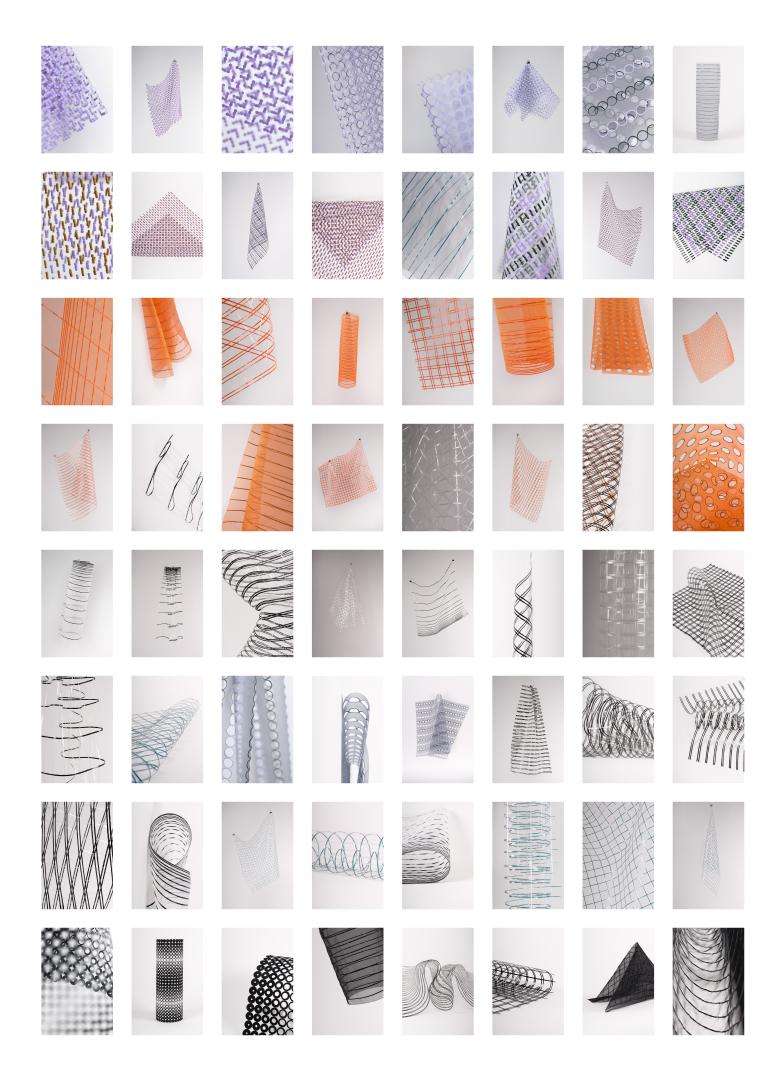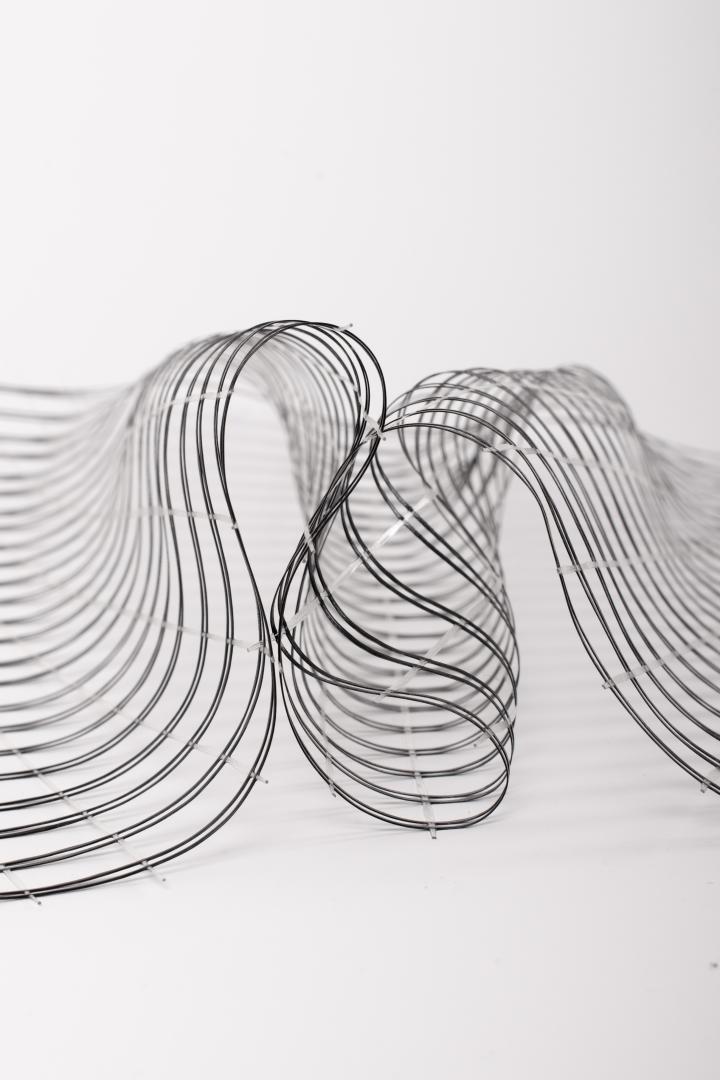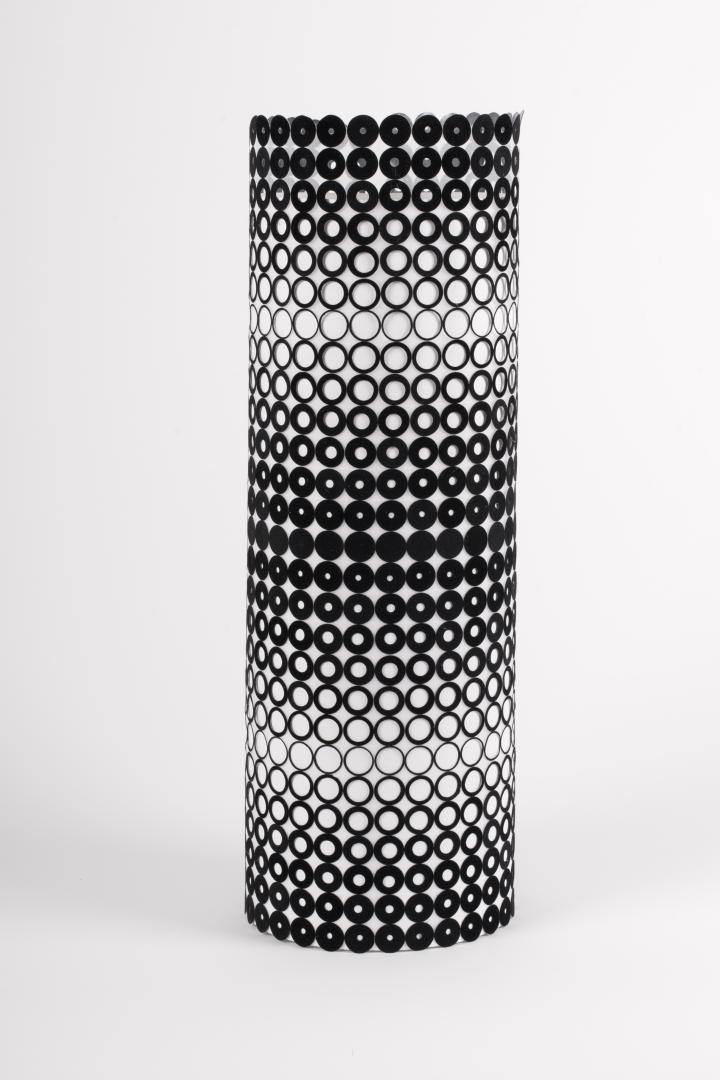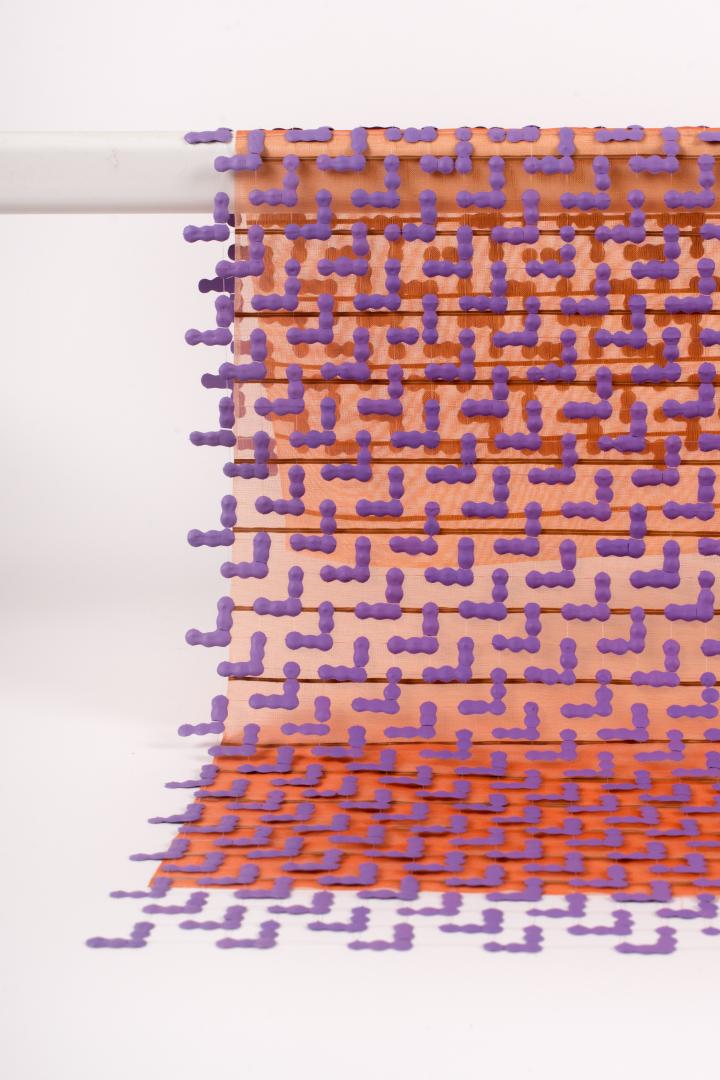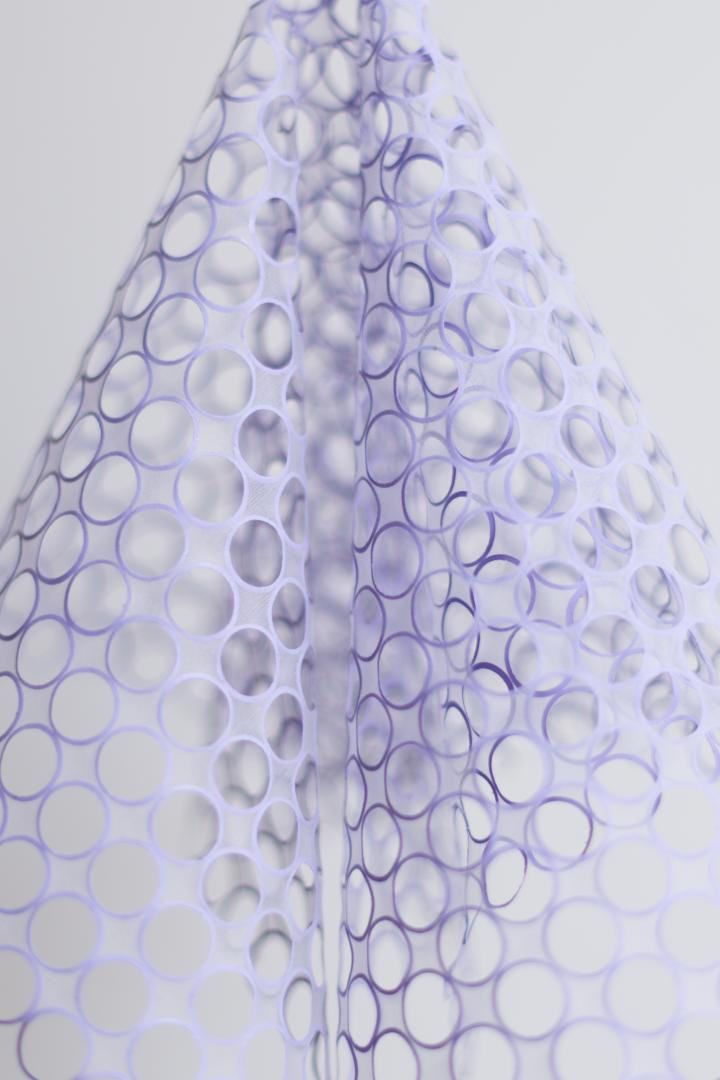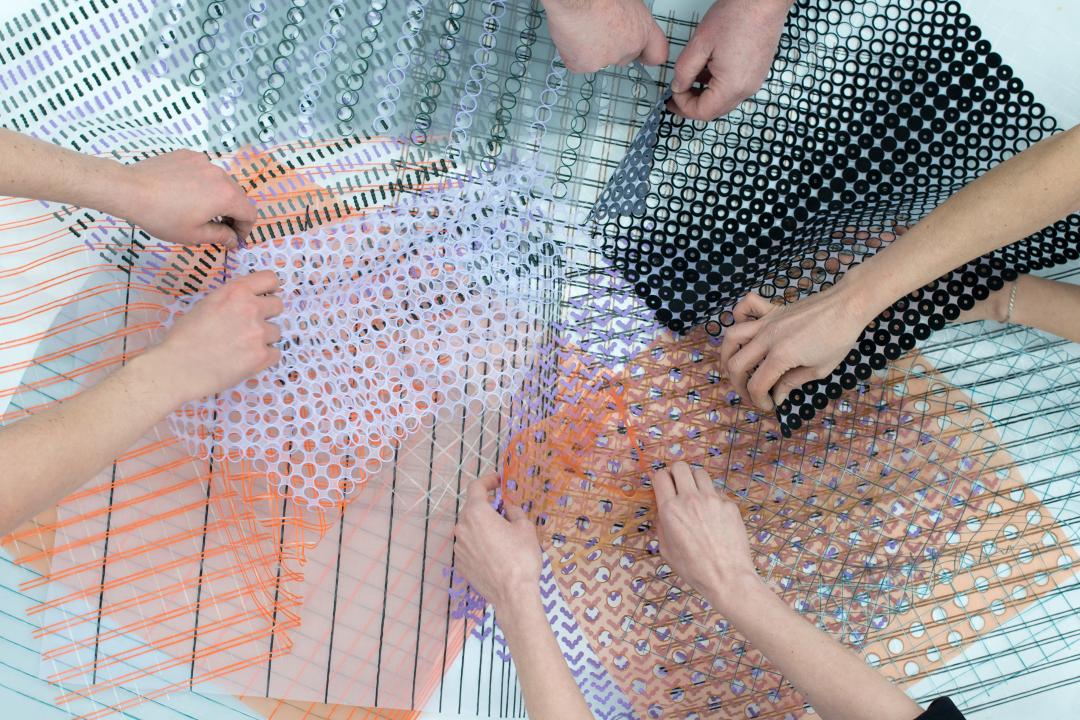INTER_SPACE
Basic information
Project Title
Category
Project Description
INTER_SPACE is a new material development based on the interplay between traditional crafts and the increasing digitalisation using contemporary lace as an example. While touching the multi-sensory materials, an unrestricted access to tactile experiences is enabled and the ability to learn and remember is strengthened. The project consolidates the local cultural landscape through its innovative design and at the same time takes a serious stance in the international new materials development.
Geographical Scope
Project Region
Urban or rural issues
Physical or other transformations
EU Programme or fund
Which funds
Description of the project
Summary
INTER_SPACE is an experimental material investigation of multisensory textiles based on the examination of the advancing digitalisation of society. Its consequences in relation to the handling of textiles, as well as their development, were examined, in particular, the growing needs for haptic experiences and individuality. In order to connect the scientific research with today’s textile design, the topic was mirrored using the example of lace and thus metaphorically transferred to a textile medium.
The material is a textile translation of the actual state of the digitalised and yet analogue society through its united filled and empty spaces – materiality and immateriality. By questioning defined boundaries of traditional lace, a contemporary expression of the material emerged. Classical textile manufacturing processes were extended by the development of new constructive techniques in which temperature and pressure played a major role. In connection with new types of materials, whose properties were additionally combined, a textile hybrid form was created - contemporary lace.
INTER_SPACE is exemplary and outstanding for all people concerned with the increase of one-sided, immaterial user interfaces, the slowly diminishing variety of sensory experiences and their serious effects on the ability to learn and retain knowledge. The dual information intake of “grasping” something, i.e. the intellectual and sensory performance, anchors the experience more firmly in our memory and strengthens our ability to learn and remember.
The project brings together pioneering craftsmanship with forward-looking aesthetics, strengthens the local cultural landscape through its innovative, independent and individual design position, and at the same time, with its diverse, interdisciplinary areas of application, takes a serious stance in international new-materials development. The conceptual framework strengthens experimentation and enables unrestricted access to information.
Key objectives for sustainability
Sustainability and circular economy:
- locally based artisanship
- minimal material content (e.g. 40 x 40 cm = 8g) with maximum multi-sensory impact
- can for the most part be broken down again into individual components when disposed of
- can be repaired by a skilled artisan at any time
- counter-position to inflationary throw-away articles by making visible handicraft processes and their value / from the interchangeable to the special, unique
- value creation through appreciation
- the material possibilities developed can be transferred to existing textiles in upcycling processes
The project believes in the importance of countering the ever-increasing acceleration of the consumption of commercial goods with a measure, a valuable slowness of production, and to surround ourselves with fewer, but in every respect more valuable materials. When something cannot be produced in five minutes but takes days or even weeks, it decelerates our consumer behaviour and makes us think about why we indulge in masses of interchangeable throwaway objects. In addition to the theoretical debate, the INTER_SPACE materials convey in their real existence the pure joy of dealing with handmade developments that have been created through craftsmanship and design excellence.
Key objectives for aesthetics and quality
INTER_SPACE is not only about the radical reinterpretation of a traditional textile (lace), but also about the pure joy of the tactile and visible experience and a contemporary, culturally relevant contribution. The haptic qualities of the materials developed range from elastic-flexible to filigree-super fine, from velvety-soft to three-dimensionally-textured. Colour, material contrasts and transparencies are used to create a singular aesthetic experience.
1) Preservation of tradition and craftsmanship through further development and reinterpretation.
2) Sense of touch
Different haptic and visual experiences are closely linked to sensory experiences and learning abilities. In times of increasing use of super smooth user interfaces on our electronic devices, this variety of tactile, novel surface structures is of great interest to us as a diversely learning and sensing society.
3) Visible aesthetics
Through superimpositions, they allow for a myriad of possible combinations and thus aesthetic exploitation. Interconnected contrasts of visible and invisible materialities, of surface and space, opaque and transparent, matte and shiny lead to surprising and joyful experiences of the material world.
4) Contemporary, innovative and culturally relevant design contribution.
The materials created by INTER_SPACE are radically new, unique and forward-looking. Moreover, they become information carriers and convey socially significant content on a newly accessible level.
5) Visual haptics
INTER_SPACE materials are visually haptic and charged with unique, surprising, tactile properties even when looking at images of them.
Key objectives for inclusion
1) Inclusion
Experiencing INTER_SPACE materials is unrestricted and appealing to all age groups, backgrounds, genders and abilities.
2) Education
This project includes plans for workshops with schools and other educational institutions (e.g. the “Kinderleicht” project by Kunststiftung Sachsen-Anhalt).
3) Cooperation
There is an already existing (with Studio OINK interior design) as well as planned cooperation with local businesses & artisans.
4) Accessibility
INTER_SPACE materials will be made available to the public through multiple channels. IRL through the actual Workspace in Leipzig with open-studio-events (e.g. Nacht der Kunst), as part of local and national art and design fairs (Grassi, Textil Forum), as part of museum exhibitions and presentations (Kunstgewerbemuseum Dresden, Kunststiftung Sachsen-Anhalt) and online through social media channels.
5) Affordability
Merchandising INTER_SPACE materials into affordable products (small-scale textiles and objects such as jewellery. Upcycling methods developed through INTER_SPACE as means of reusing or up-scaling existing textiles or products.
The INTER_SPACE project is exemplary and outstanding for all people dealing with the increase of one-sided, immaterial user interfaces, the slowly disappearing variety of sensory experiences and its serious effects on the ability to learn and difficulty holding on to learned information. The meaning of grasping something doubles as touching and simultaneously understanding. This double information intake, i.e. the intellectual and sensual performance, anchors the experience more firmly in our memory and strengthens our ability to learn and to remember. The materials also serve as an inclusive, communal way of experiencing contemporary design innovation on a local level.
Physical or other transformations
Innovative character
Extensive research and experimentation has resulted in unique, innovative, multi-sensory materials that will be introduced into cultural discourse through collaborations, workshops, presentations and exhibitions. The INTER_SPACE project can be experienced by a diverse society without inhibitions, leading to sensory learning, experiencing (and possibly owning) valuable, joyful examples of modern design and craft. Its impact has both local and international reach. The materials are valuable through craftsmanship, design achievement and time spent; their particular impact is to highlight the discrepancy between valuable and inferior, quickly produced and disposable products. They have a high aesthetic and sensual impact with minimal material input. They are largely sortable into their source materials, can be repaired repeatedly in the long term and are also relevant as design objects in the long term thanks to a distinct, contemporary design.

